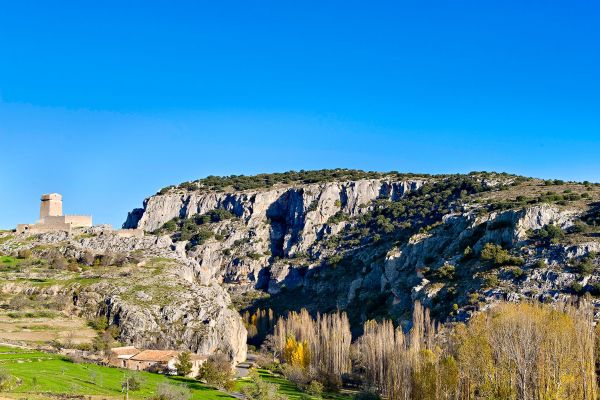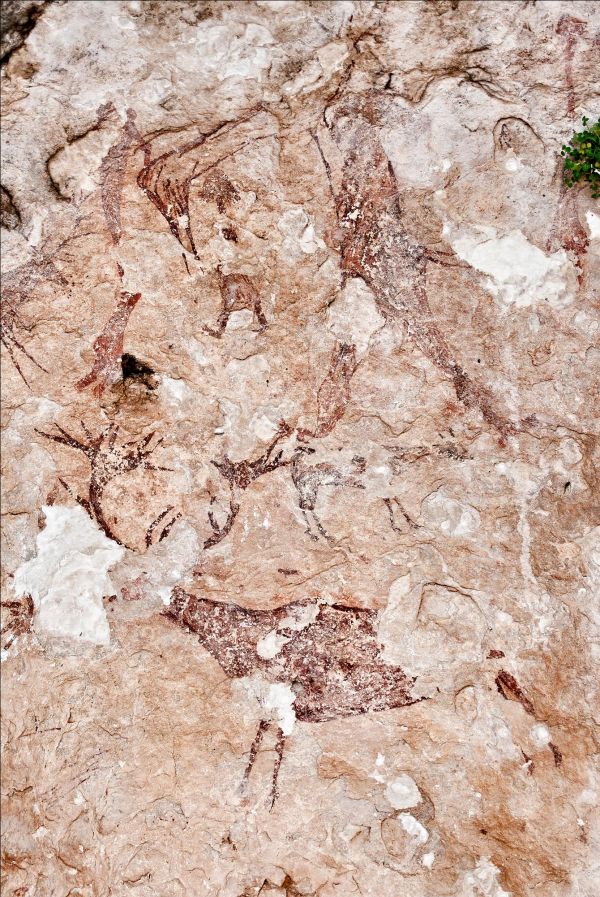Nerpio: an open-air museum
Albacete
Nerpio is a town of exceptional natural beauty, in a landscape dominated by the Cabras mountains and with the waters of the Taibilla river, whose banks feature the intact beginnings of a long history of human settlement. Embedded in the wedge formed by the provinces of Albacete, Granada, Jaén and Murcia, a crossroads that has certainly influenced the hospitable nature of people from Nerpio, its traditions, the local accent - a blend of customs and cultures that make the town’s ethnographic aspects more interesting.
This all means there are several options for tourism: abundant nature, activities such as hiking or biking. An extremely valuable slice of cultural heritage.
Let’s start with the area’s cave art. 70% of the region’s cave art is found here, with over 70 different examples. Under the administrative name of Cave Art of the Mediterranean Arch of the Iberian Peninsula these paintings have been declared a World Heritage Site by Unesco.
A rosary of shelters bear witness to the area’s pre-historic past with some particularly valuable documents. Over 30 stations with Levantine pre-historic cave art (10,000-6,500 years ago): Abrigo de la Hoz, Abrigo de Viñuela, Abrigo de los Ídolos, Abrigo de los Sabinares, etc. (different shelters featuring cave art) These include the noteworthy complex of Solana de las Covachas, with 200 representations of archers, women and the classical fauna of this art (goats, deer, bulls and horses). There is also the Torcal de las Bojadillas, with hundreds of figures, as another large complex conserving expressions of the beliefs of the last groups of hunter-gatherers. A figurative art with a unique execution technique, using bird features and achieving the Levantine pen stroke, unique in Western Europe. The Neolithic producer groups expressed part of their beliefs through painting using abstract motifs (strokes, points, specks, etc.): this is known as Iberian schematic art (6,500-3,200 years ago). The town of Nerpio also offers excellent examples. Particularly noteworthy among dozens of examples are the Shelter of Taibilla Castle and at Solana de las Covachas, in its shelters III, V, VI and IX.
IMPORTANT: can only be accessed if you hire a guided tour at the tourist office.
The area surrounding Nerpio offers a wide range of optional visits. Many are hiking trails starting from the town itself.
The most simple and accessible, around 4 km, takes us to Molino de las Fuentes, which is the source of the Acedas stream that runs through the town centre. It is a recreational zone, with picnic tables and a nice spot for relaxing.
The Zarzalar route, around 8 km, takes us along the riverbanks (or literally across the river) to the village of Turrilla, a beautiful trip through the heart of the valley.
Driving to the Taibilla reservoir is another good option for enjoying picture-perfect scenery, bird watching and fishing.
However, a half-day excursion by car offers a route with a stunning destination and some spectacular, short stops. Our destination is the Sierra de las Cabras Nature Reserve, 30 km from Nerpio.
Just after leaving the town towards the village of Pedro Andrés, in the left margin, we find the Plantón del Covacho, a spot dominated by a 500-year-old walnut tree that dried up a few years ago. The trunk remains, allowing visitors to imagine how big it was.
A few kilometres later, the Taibilla castle is one of the best and largest castles in the Segura mountains. A Muslim fortress built between the 11th and 15th centuries that served as a frontier between Christianity and the Kingdom of Granada, and certainly witnessed many skirmishes. It is located atop a crag offering sweeping views of the Taibilla valley.
Following our path, we stop at the Puntal de la Vieja lookout point. The summit offers stunning views of the Artuñio Ravine, the Sagra Peak in Granada, Sierra de las Cabras and the Calares del Mundo y de la Sima. It is located on the road between Pedro Andrés and the village of Cañadas, on the right side of the road.
We then reach the Sierra de las Cabras. This really is the ceiling of La Mancha province: the Atalaya peak reaches 2,082 metres. The views when climbing the mountain will leave you breathless. The summit is almost virgin land. To admire this zone, just visit the hamlets of Las Cañadas and Fuente de la Carrasca.
Always check the weather forecast before planning any journeys.
May also be of interest to you
Castilla-La Mancha Tourism in 2023. All rights reserved.

 365
365






